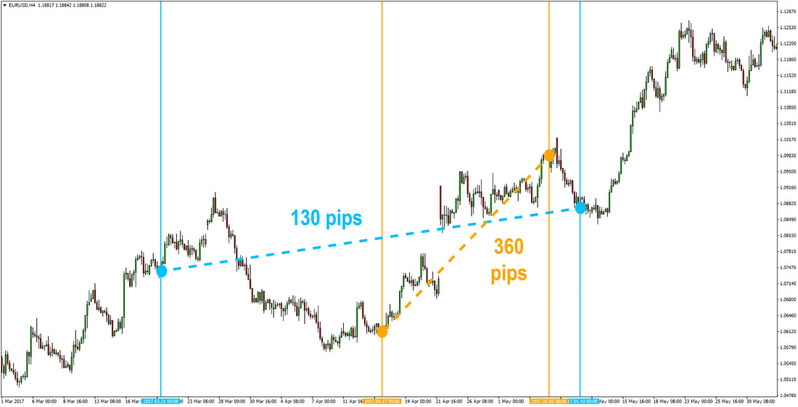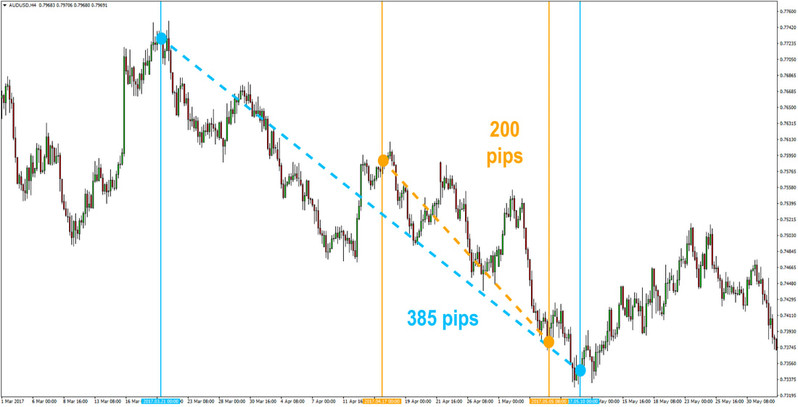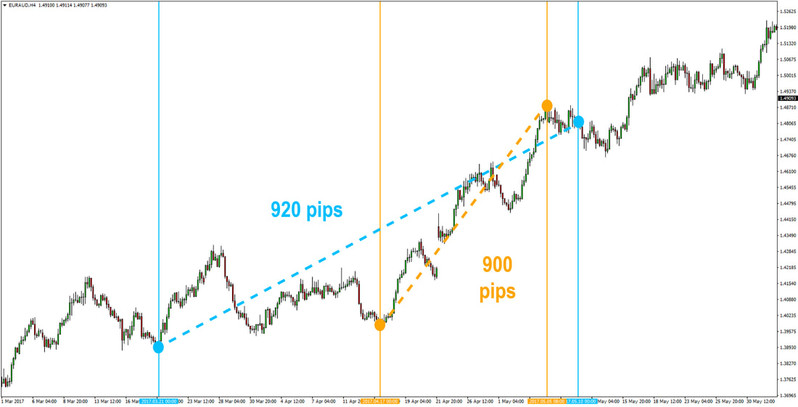Cross pairs are not moving in isolation – Majors and crosses are closely related
The topic of correlation is not new and anyone who has traded the markets knows that there are certain relationships that exist between and within certain markets.
The Forex market has many correlations, both with different markets and between the different currency pairs.
Aside from the relationships that exist between some of the major USD pairs, cross currency pairs also have certain relationships to the major pairs and to other crosses.
Cross currency pairs are a direct function of USD pairs
It may surprise you that the crosses are, in fact, just a function of the two respective major USD pairs.
This can be easily proved by taking two USD pairs and dividing their exchange rates (or sometimes multiplying them when the USD is the base currency). You will get the exchange rate of the respective cross pair (comprised of the two other currencies of the USD pairs).
This holds true even when you take positions on two major USD pairs where one is a USD long and the other a USD short. The net result is always a long or a short position on the respective cross pair.
For example, a long EURUSD position and a long USDJPY position held at the same time equals a net EURJPY long position. That is to say, being simultaneously long EURUSD and USDJPY is the same as being long EURJPY.
This is because in the long EURUSD trade we buy the Euro and sell the US Dollar while in the long USDJPY trade we buy the US Dollar and sell the Japanese Yen. In effect, the short and long USD positions cancel each other out and only a long Euro and a short Yen remains.
Thus, if this trade example was real, the sum of the profit/loss of the EURUSD and the profit/loss of the USDJPY longs will equal the net profit/loss of the single EURJPY position.
The main takeaway is that you can trade cross pairs both ways - through major pairs or through the direct cross.
In this sense here’s one useful tip:
If some cross pair or some exotic pair like EURRUB or EURMXN is not available with your broker – don’t worry and don’t panic.
If you want to be long EURRUB for example, then just go ahead and buy EURUSD and USDRUB separately at the same time. You will be basically long EURRUB even though the pair is not listed on your broker’s platform.
How trading the crosses can be more profitable than trading the majors
From this point, it’s easy to realize how exchange rate movements in major pairs have a direct effect on exchange rates of cross pairs.
To see how better opportunities can exist on cross pairs we will look at the following 3 charts, the two majors EURUSD and AUDUSD and compare them to their cross pair product - EURAUD.
There are two blue and two orange lines on each of the following three charts plotted at exactly the same points in time. The area between the blue lines represents the broader trend, while the period between the orange lines represents the time when the trend steepened and price action was thrusting.

EURUSD is in an uptrend - 4h chart
We can notice that there is a broad uptrend in the EURUSD pair and a broad downtrend in the AUDUSD pair during the same time period as marked with the lines.
EURUSD rose by 130 pips in total from March to May as marked with the two blue dots, and 360 pips from April to May as marked with the orange dots.

AUDUSD is in a downtrend - 4h chart
AUDUSD fell by 385 pips over the same time period from March to May (blue dots) and 200 pips over the period from April to May (orange dots). Obviously, out of the 3 currencies for the selected time periods, the strongest is the Euro and the weakest is the Australian Dollar, while the US Dollar is in the middle.
Naturally, when we take a look at the EURAUD chart during the same periods, we can see an even stronger uptrend than in the EURUSD pair. EURAUD rose by 920 pips from Match to May and 900 pips when the trend accelerated from April to May.

EURAUD is in an even stronger uptrend - 4h chart
The bottom line is, very often the crosses will offer much better opportunities than the majors alone, just like EURAUD did in this example.
The fact is, the US Dollar will be somewhere in the middle on the strength/weakness metric most of the time and all the different currencies will rotate between being the strongest and the weakest in different times.
Finding the weakest currencies and matching them with the strongest currencies is a practice that’s going to make being consistently profitable in Forex trading much easier and one that most successful traders have perfected over time.
Analyze the crosses through the majors
When trading the crosses, it’s always important to watch the technical levels on the two respective major USD pairs, even more so than paying attention to the technicals on the cross. This is especially true if it’s an illiquid cross like for example GBPCAD or NZDCHF.
In such a case, it’s much better to analyze the technicals on GBPUSD and USDCAD separately, make conclusions from the charts of those two major pairs and then trade GBPCAD accordingly.
It’s not hard to see that technical levels are not respected very well on illiquid cross pairs, Instead, the market usually reacts to the technical levels on the major pairs and that automatically translates into reactions on the crosses.
This doesn't mean that support or resistance will completely not work on cross pairs, but that they are generally less reliable. The basic rule of thumb is that the more liquid a pair is the better the technical levels will work. So, some liquid crosses like EURGBP or EURJPY very often will form technical patterns just as reliable as the major pairs.
All the technical analysis tools and methods like support/resistance , moving averages and pivot points can be applied just as normal to analyze the charts of the two major pairs. Any conclusions like for example, bullish technicals on both GBPUSD and USDCAD just point to an even more bullish GBPCAD outlook.
Summary
Finally, it’s important to note, that it’s not only the majors that affect the crosses but cross pairs can also affect the major pairs. For example, a lot of buying on the AUDNZD cross can often cause AUDUSD to go up as well. Similarly, a lot of buying in EURGBP or EURJPY can cause EURUSD to rise as well.
In the next articles of this series, we will be looking at more examples of how to analyze and combine the analyses of the majors and crosses in order to determine the best trading opportunities in the Forex market.





